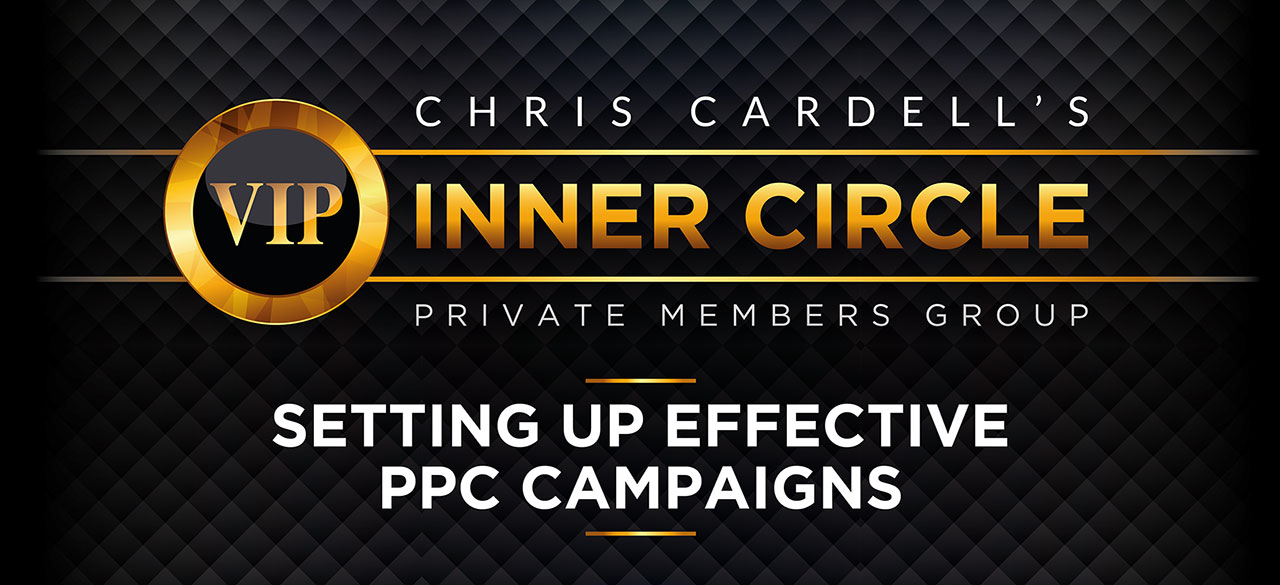
Setting Up Effective PPC Campaigns
Back in the day, getting noticed was tricky. Put an ad in a magazine and hope the right person sees it. Put leaflets through front doors on the off-chance your ideal customer picks one up.
Nowadays, with the power of the internet, it’s so much easier. Digital advertising platforms let you target ads so you know they’ll be seen by the people you want to engage with.
Pay-Per-Click: The Lowdown
Pay-per-click advertising is like a tin of Ronseal: it does exactly what it says on the tin. You pay for every click your ad gets. If nobody clicks, you don’t pay. If lots of people click, you pay more, but hopefully, those clicks will lead to a bunch of sales.
It’s so much better than traditional advertising, where you’d pay regardless of whether anybody actually responded to your ad or not.
The most popular pay-per-click platforms are Google and the major social media networks, such as LinkedIn, Instagram, Facebook and TikTok.
Setting Up A Campaign
Setting up a pay-per-click campaign requires a strategic approach to make sure you maximise your return on investment.
Here are the steps to follow:
1. Define Your Goals
Start off by defining your goals. What do you want your campaign to achieve? Do you want people to sign up for an event, buy a product in your sale or something else?
Clearly defined goals will help you design and create your ad and give you a yardstick to measure its success with.
2. Carry Out Keyword Research
Google pay-per-click campaigns (also known as paid search) are based on keywords: you specify the search terms you want your ad to feature under.
It’s important to choose these keywords carefully. Use keyword research tools like Google Keyword Planner to identify the most relevant ones for your business. Consider factors such as search volume, competition and relevance to your offerings.
3. Understand Your Audience
Social media platforms such as LinkedIn allow you to target your ad based on demographics, job titles, interests and company characteristics. It’s a powerful tool, but only if you understand who you’re targeting in the first place.
Create a profile of your ideal customer and use that profile to define the audience for your pay-per-click ad. Using LinkedIn as an example, your audience might look like this:
-
- Based in UK
- Director, Business Owner, CEO or COO
- Company size: 10–50 employees
- Engineering and manufacturing sector
- Interested in sustainability
4. Choose The Right Platform
We’ve used LinkedIn above in an example that illustrates a B2B campaign. If you’re advertising B2C, you’ll probably use a different platform that’s less focused on people’s professional networks, such as Google, Instagram or Facebook.
Each platform has unique features and audience demographics, so it’s important that the platform(s) you choose are relevant to your target audience.
5. Set A Budget
Establish a realistic budget for your PPC campaigns. Allocate budget based on the value of a conversion and your overall marketing budget. Make sure you monitor and adjust your budget as needed throughout the campaign.
6. Create A Compelling Ad
You might have defined the perfect target audience, but if your ad doesn’t capture their attention, they’re unlikely to click on it.
Create an ad that is eye-catching and features a headline that is quick to read and understand. Headlines that spell out a benefit or define a problem that you’re able to solve for your audience work well.
Remember, people will be scrolling through a feed, and the easiest option for them is to keep on scrolling right past your ad. Your copy and design need to make them stop and look.
7. Keep An Eye On Your Competitors
When you’re crafting your campaign, take a look at what your competitors are doing. Analyse their ad copy, keywords and positioning. This information can provide valuable insights and help you differentiate your campaigns.
8. Design Your Landing Page
Your ad has done its job and got the click. Now what? The user will be taken to a landing page, which is the next step in your sales funnel.
The content on your landing page should match the ad, spell out the benefits of your offer and the features, and include a clear call-to-action. Optimise loading times for a better user experience, too, remembering that a lot of people will be engaging with your ad on a smartphone.
9. Put In Place Conversion Tracking
Install conversion-tracking tools to measure the success of your campaigns. These tools monitor what somebody does on the landing page after they’ve clicked on your ad. You can tell how many people convert after having clicked, which is your most important metric. It tells you which of your ads are earning you money in conversions and which aren’t.
10. Test Multiple Ads
Another great advantage of digital advertising over traditional advertising is that you can run several ads at once.
Test versions with different images, headlines or calls to action. Dive into the campaign analytics to see which ones are performing best. Which ones get the most clicks and, most importantly, which ones lead to the most conversions?
These insights will not only help you optimise your current campaign but help you build up your understanding of your audience and inform future campaigns.
11. Adjust And Optimise
Make sure you’re keeping an eye on the data throughout your campaign and be ready to adjust things if need be. Pay-per-click campaigns are dynamic. You can adjust them as much as you like and whenever you like.
If an ad isn’t performing, you can pause it and tweak elements of it, such as the audience targeting, budget or design.
The Final Word
Setting up effective pay-per-click advertising campaigns involves a strategic combination of research, planning and ongoing optimisation.
By defining clear goals, conducting research, creating compelling ad copy and continuously monitoring and adjusting campaigns, you can use digital ads to drive targeted traffic to your website. Adaptability, data-driven decision-making and a commitment to optimisation are key to making a success of it in the long term.

As a member of Chris Cardell’s VIP Inner Circle, you get access to the world’s most effective strategies to grow your business and increase your profits. Your VIP Inner Circle membership includes your monthly 24 page Business Breakthroughs newsletter mailed directly to you, exclusive Online Videos and Seminars, reports on Advanced Marketing, Sales and Internet Marketing strategies, a monthly Q and A call with Chris Cardell and exclusive access to the VIP Private Members Group on Facebook.
Chris Cardell is renowned for being able to show success driven business owners how to increase their profits by 50-250%. He has been featured on BBC, ITV, News at Ten and The Sunday Times. Chris Cardell is your direct access to everything you need to safeguard your business and increase your Entrepreneurial Wealth.
AS FEATURED ON

